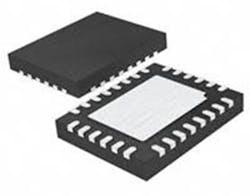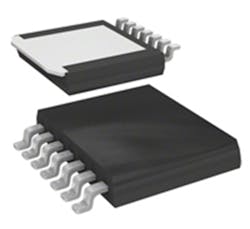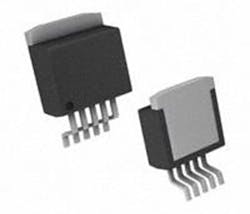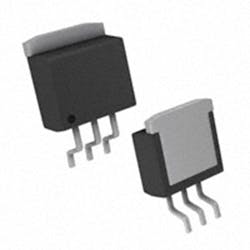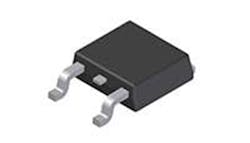Linear regulators use an internal transistor to control the output voltage. That transistor needs some headroom—you can’t get 5-V output with a 5.01-V input. That headroom is also called dropout. Hence, a low-dropout linear regulator can provide a regulated output even when the input voltage sags or is very close to your desired output voltage.
There are many specs to consider—input voltage range, output transient response, and output noise—but a fundamental spec you first need to ensure is adequate output current. Some LDOs produce a few milliamps of output, where others can supply 5 A. A regulator that produces more output current also needs a larger dropout voltage in order to work. The following positive-output parts have a low dropout as well has high output current.
1. The LT3070 from Analog Devices has 5-A output with 0.15-V maximum dropout. Maximum input is 3 V; output voltage is adjustable from 0.8 to 1.8 V.
2. The MIC69502 from Microchip Technology has 5-A output with 0.5-V maximum dropout. Maximum input is 5.5 V; output voltage is adjustable from 0.5 to 5.5 V.
3. The TPS756 from Texas Instruments has 5-A output with 0.5-V maximum dropout. Maximum input is 5.5 V; output voltage is 1.5, 1.8, 2.5, and 3.3 V, as well as a 1.22- to 3.3-V adjustable output part.
4. The SPX1585 from MaxLinear has 5-A output with 1.2-V maximum dropout. Maximum input is 10 V; output voltage is 1.5, 2.5, and 3.3 V or 1.27- to 8.8-V adjustable output part.
5. The AP1084 from Diodes Inc. has 5-A output with 1.4-V maximum dropout. Maximum input is 12 V, output voltage is 1.25 to 10.6 V.
If you need a lot of current to feed your next circuit design, be sure to check out these parts.
This is a new format for us and we’d love to get your feedback. If you would be willing to discuss this article with an editor, please email [email protected].

